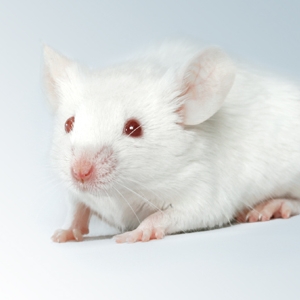Well, maybe not quite yet. But researchers at the Georgetown University Medical Center say they’ve discovered a simple, natural way to dramatically reduce fat in mice – and they say that bodes well for development of a quick, effective treatment for stubborn obesity in humans…
 Obesity-related diseases cost Western Society hundreds of billions of
Obesity-related diseases cost Western Society hundreds of billions of
dollars a year. What if we could wipe them out with a simple,
natural protein treatment?
Researchers went looking for a possible cancer-fighting agent and came up, serendipitously, with what may prove a powerful anti-obesity treatment.
Much of the obesity that’s plaguing the Western World these days is underpinned by metabolic issues, often inflammatory syndrome. Now, the Georgetown team says it’s found that a naturally occurring protein, FGFBP3 (BP3 for short), might be key to treating conditions associated with metabolic syndrome, such as Type 2 Diabetes and Fatty Liver disease.
What they did…
Noting that BP3 levels are often elevated in cancer patients, the study’s Senior Investigator, Dr. Anton Wellstein, a Professor of Oncology and Pharmacology at Georgetown Lombardi Comprehensive Cancer Center decided to study its role in the progress of the disease. Was it a cause or an effect?
What they found…
Instead, they saw a profound change for the better in lab subjects’ weight.
“We found that eight BP3 treatments over 18 days was enough to reduce the fat in obese mice by over a third,” said Wellstein.
BP3 is what’s known as a fibroblast growth factor (FGF), binding proteins (BP). FGFs are found in organisms ranging from worms to humans and are involved in a wide range of biological processes, such as regulating cell growth, wound healing and response to injury. Some FGFs act like hormones. BP1, 2, and 3 are ‘chaperone’ proteins that latch on to FGF proteins and enhance their activities in the body.
Researchers found that this ‘chaperone’ binds to three FGF proteins (19, 21, and 23) that are involved in the control of metabolism. FGF19 and FGF 21 signaling regulates the storage and use of carbohydrates (sugars) and lipids (fats). FGF23 controls phosphate metabolism. More BP3 means a more active metabolism.
“With metabolism revved up, sugar in the blood, and fat processed in the liver are used for energy and is not stored,” Wellstein says. “And warehouses of fat are tapped as well. For example, the job of FGF21 is to control break down of fat, whether it is stored or just eaten.”
What it means…
BP3 could, therefore, become a key treatment for obesity and, as a result, contribute significantly to the treatment of obesity-linked diseases.
Wellstein cautions that more research is necessary before BP3 can be tried on humans, but it looks very promising. But, because BP3 is a natural protein and not an artificial drug, clinical trials of recombinant human BP3 could begin after a final round of pre-clinical studies.
My take…
If BP3 does turn out to be a ‘silver bullet’ for obesity, it stands to be regarded by history as a game-changer in the massive obesity-mediated epidemic in health care that’s plaguing the Western World. And wiping out obesity could change the whole social structure of the West, freeing up hundreds of billions of dollars now spent on treating obesity-related diseases for use in other ways – not the least of which will be ensuring a sustainable food supply in the future.
Not to mention that I have a few extra pounds I’d like to lose, myself…
~ Maggie J.

